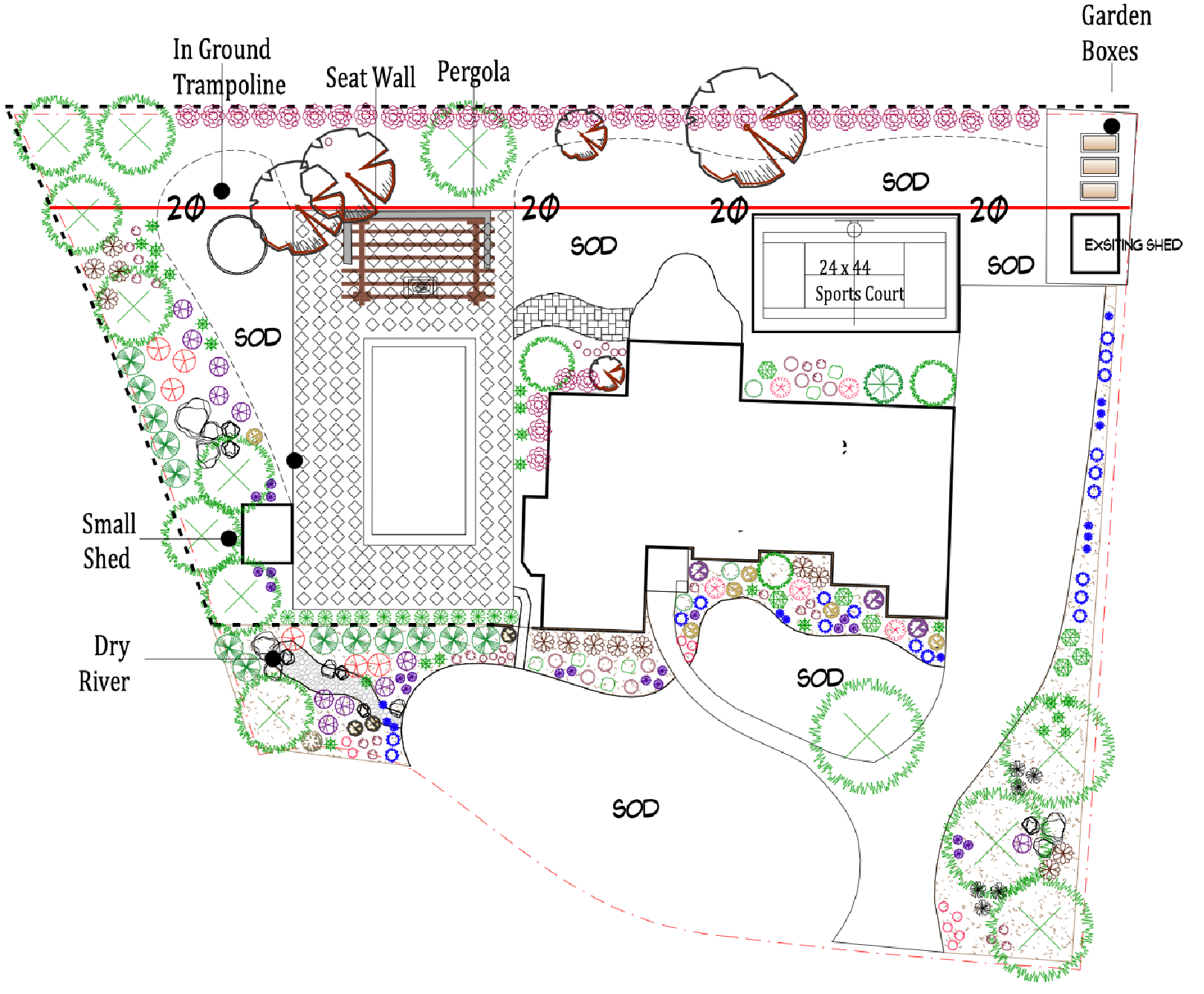As we consider enhancing the appearance and practicality of landscapes, landscape design plays a pivotal role. Whether you want to create a beautiful outdoor oasis, a lovely entryway garden that enhances street appeal, or an eco-friendly garden that promotes eco-conscious living, the best materials and approaches can make all the difference. With the increase of customized outdoor living areas, more homeowners are seeking innovative ideas and practical approaches to convert their gardens into tranquil environments.
In this comprehensive guide, we will investigate crucial landscape design concepts, from the most recent developments for 2025 to evergreen techniques that cater to small yards and minimal upkeep strategies. We will also discuss the fine details of seasonal landscaping, highlight the significance of choosing the right plants, and offer tips for integrating hardscaping. Whether you have design experience or a novice diving into this design realm, the following recommendations and tools will help you design a landscape that is not only aesthetically pleasing but also a true reflection of your unique taste.
Top Landscape Planning Ideas
Crafting a stunning outdoor space begins with original concepts that express your unique taste and address your requirements. One well-liked method is to add multiple heights and patterns within the area, using raised beds and layered plantings to develop depth and appeal. This technique not only improves the aesthetic but also provides improved drainage and soil health. Incorporating walkways made from rock or aesthetic pebbles can additionally unify the area while providing usable entry to multiple sections.
An additional significant trend is the inclusion of alfresco areas that enhance your house's functionality. Building an outdoor kitchen, dining area, or lounge can turn your backyard into an comfortable gathering place for family and friends. Utilizing comfortable furniture, subdued lighting, and organic elements will elevate the outdoor experience. Moreover, including elements like fireplaces and pools can create a calming atmosphere that promotes enjoyment outdoors all year long.
Minimal upkeep landscaping is increasingly preferred by homeowners looking for beauty without the burden of constant upkeep. Opting for local flora adapted to your local climate and soil conditions can offer a colorful variety of hues while demanding less water and care. Pairing these plants with stone features such as patios or stone walls can simplify upkeep tasks, allowing you to appreciate your landscape without the ongoing needs of classic gardening.
Fundamental Techniques for Exterior Transformation
Transforming an outdoor environment begins with a definitive strategy that includes the dual aspects of aesthetics and practicality. Begin by reviewing the existing layout, spotting areas that need upgrade, and settling how you desire to utilize your area. This first assessment lays the groundwork for a cohesive design that boosts your outdoor enjoyment. Consider the movement of traffic, positioning of furniture, and how distinct elements play off one another in the landscape.
Incorporating hardscaping components such as patios, walkways, and retaining walls brings structure to your design. These features not just enhance the aesthetic appeal and also provide practical surfaces for tasks and lessen upkeep needs. Use materials that match your home’s architecture and blend smoothly with natural surroundings. Intelligent hardscaping promises your yard can hold up to the trial of time and providing a practical outdoor living area.
An additional key method is the strategic use of plants and lighting. Opt for plants that suit your climate and preferred maintenance level, emphasizing on native species for an environmentally friendly approach. Layering plants with varying heights creates depth, while seasonal flowers offer year-round interest throughout the year. Additionally, implement lighting to highlight focal points and create ambiance during evenings. Well-planned lighting converts your landscape into a magical retreat, guaranteeing you can enjoy your outdoor space at all hour.
Preparation and Execution of Landscape Design Projects
Effective landscaping begins with thorough preparation. This stage involves evaluating the space you have, identifying your requirements, and setting a financial plan. Collect ideas from multiple sources like literature, magazines, and websites, concentrating on the top 10 landscaping concepts that align with your vision. Create a wish list that includes elements such as water installations, outdoor structures, and particular plant types that you want in your design. A detailed site assessment will allow you to comprehend the solar exposure, soil composition, and water flow, which are crucial for creating a viable and aesthetically pleasing landscape.
Once the design stage is complete, the subsequent step is to create a landscaping blueprint. Draw out your concepts, incorporating hard landscape elements and considering the rules of color and layout. For those beginners to landscaping, using apps can streamline this process, permitting for easy iterations and adjustments. Ensure to consider how your design integrates with your home’s design and environment. This is the time to confirm selections for plants, materials, and features while considering functionality and maintenance levels.
With the design finalized, it's the moment to transition into execution. This involves getting ready the site, which might include removing debris, leveling, and amending the soil. Adhere to your design closely, executing each step systematically, whether you're constructing hardscapes or planting. Keep https://wildwoodlandscape-fl.com/ on seasonal changes and how they may influence your landscape throughout the year. A well-planned landscape will not only beautify the beauty of your outdoor space but also provide a sense of tranquility and connection with nature. Regular maintenance will be crucial to maintain the longevity of your design and to adapt to changing conditions over time.

